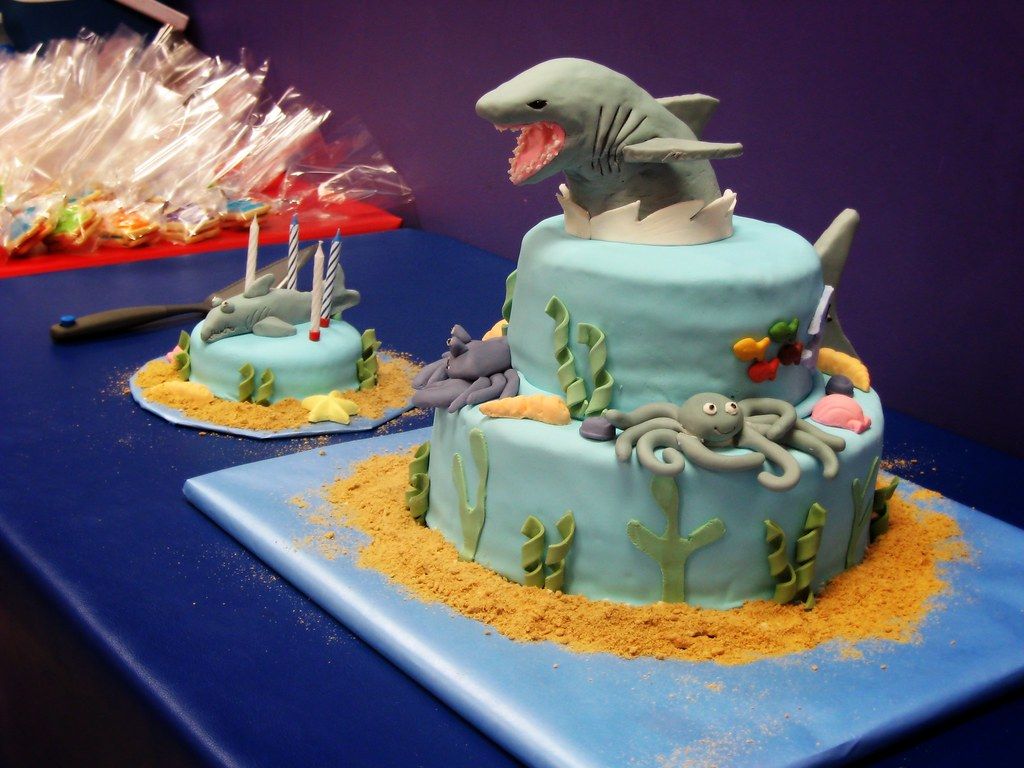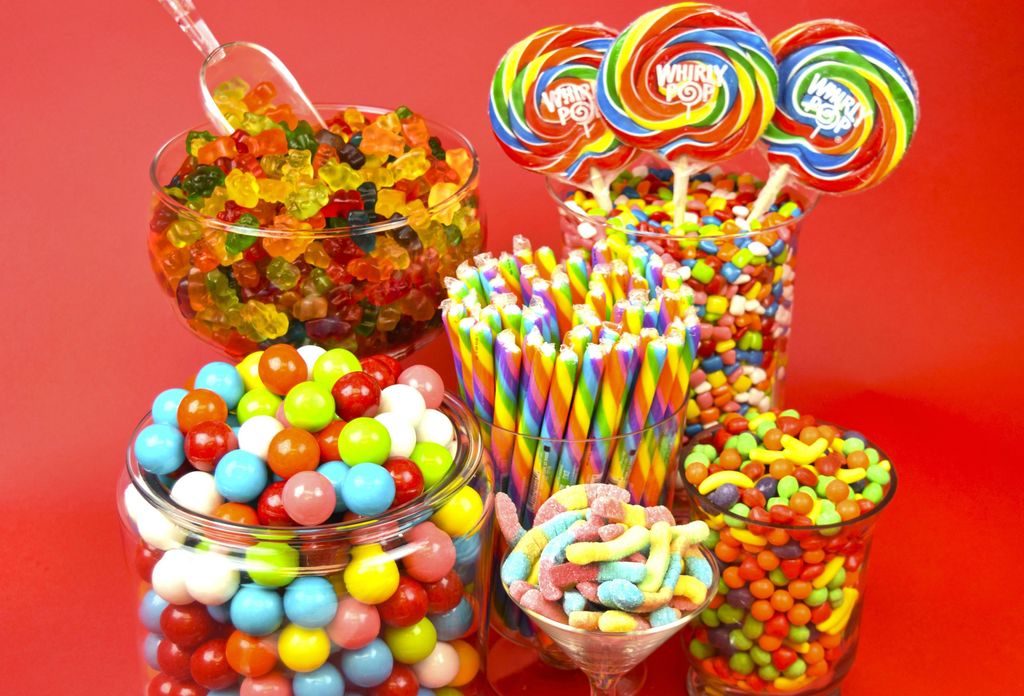
The world of candy is a truly wondrous and endlessly fascinating realm, brimming with a kaleidoscope of flavors, textures, and histories that can transport us back to simpler times with a single bite. From sugary lollipops to chewy caramels, these sweet delights have been a constant companion through generations, offering moments of pure, unadulterated joy. Yet, what often surprises many is just how relatively recent the invention of the “candy bar” as we know it truly is.
Imagine a world without your favorite chocolate fix, a time before that satisfying snap or melt-in-your-mouth experience was widely available. It’s a concept that feels almost alien in our modern, sugar-infused society. While early forms of confectionery existed for centuries, the true revolution—the mass-produced, convenient, and utterly delightful candy bar—didn’t truly take shape until less than two hundred years ago.
In this grand, sugary expedition, we’re not just reminiscing about sweet treats; we’re uncovering the rich tapestry of innovation, serendipity, and sheer human ingenuity that gave birth to some of the most enduring confectionery icons. We’re about to embark on a delightful journey, unwrapping the stories behind a dozen of the oldest candy bars that have stood the test of time, continuing to tantalize taste buds across the globe today. Get ready to dive into a delicious history lesson!
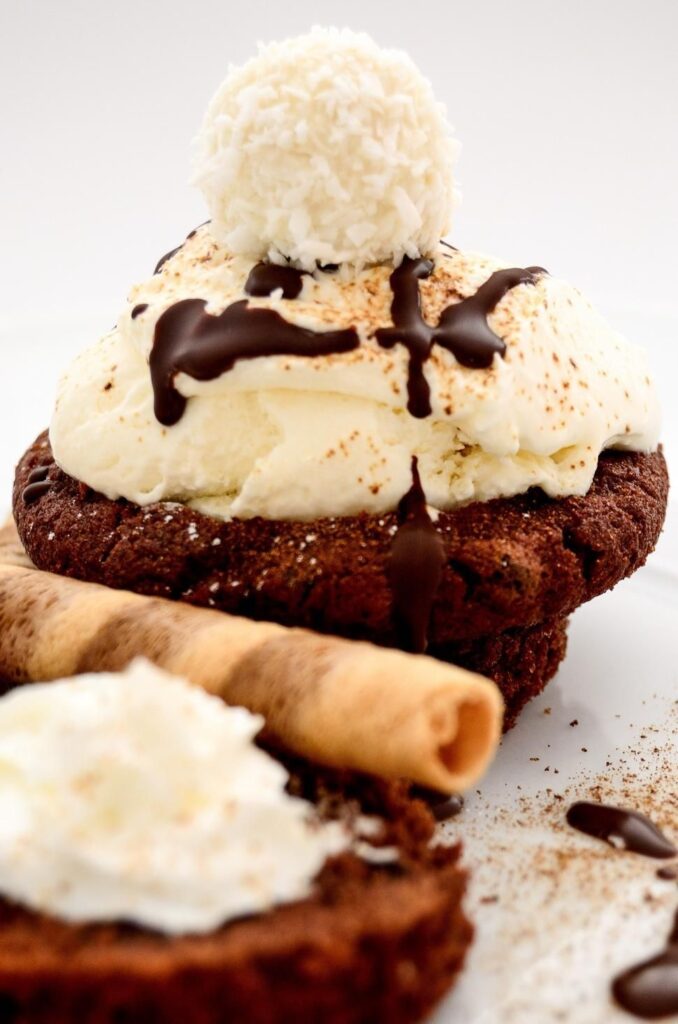
1. **Fry’s Chocolate Cream (1866)**Kicking off our historical candy bar parade, we absolutely must begin with the grand patriarch of them all: Fry’s Chocolate Cream. This venerable confection, dating all the way back to a remarkable 1866, proudly holds the title of the oldest candy bar still gracing our shelves. It’s a testament to enduring deliciousness and pioneering spirit, proving that some classics truly never fade.
It all began with Joseph Fry, who, in 1847, made a groundbreaking move by pressing chocolate into bar molds—a moment that fundamentally shifted how we consumed chocolate. While his earlier efforts laid the groundwork, it was the Chocolate Cream that emerged as the first truly mass-produced and widely available candy bar. This wasn’t just a sweet treat; it was a cultural phenomenon, democratizing chocolate consumption for the everyday person with its wonderfully flavored fondant center enrobed in a layer of plain chocolate.
Originally offered in classic chocolate cream and a refreshing peppermint cream, it’s a flavor duo that has stood the test of time. Did You Know? Before the Chocolate Cream, Fry’s also introduced the Fry’s Cream Stick in 1853, the first industrialized and affordable chocolate bar, making the Chocolate Cream a direct descendant. Over the years, other limited-edition flavors such as strawberry cream, pineapple cream, and orange cream (sadly discontinued in 2015) have charmed palates, alongside the intriguing “Five Centre,” boasting a medley of fruit flavors. Innovation has always been part of the Fry’s legacy!
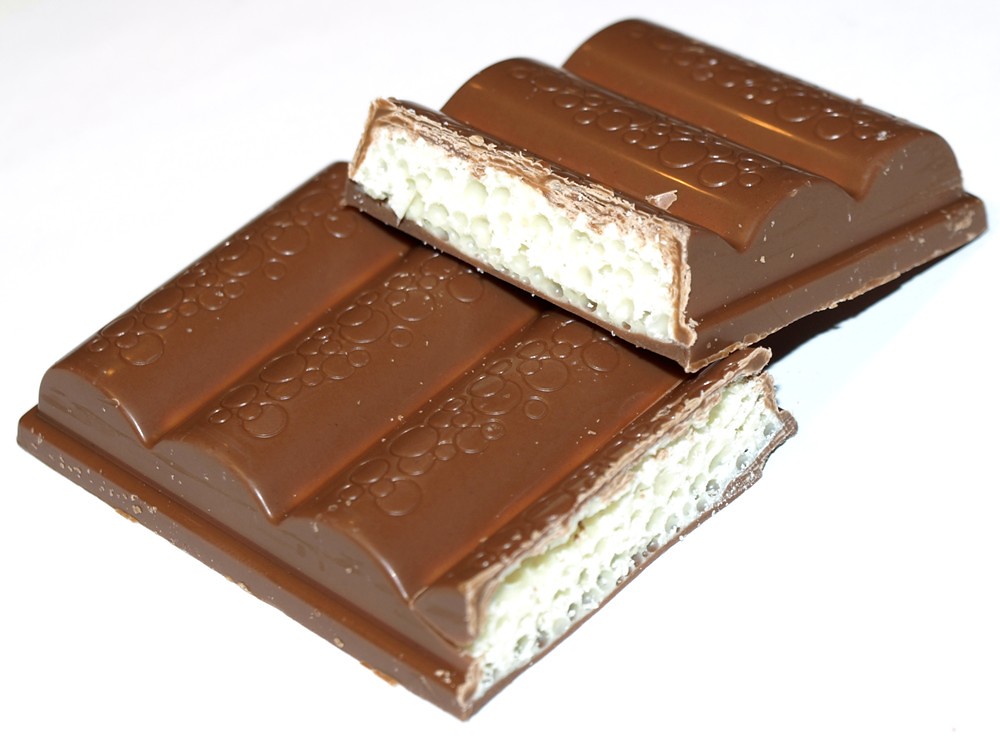
2. **Nestlé Milk Chocolate (1875)**Next on our historical timeline, we journey to the picturesque Alps of Switzerland for a revolutionary partnership that forever changed the chocolate world: Nestlé Milk Chocolate, first introduced in 1875. This wasn’t just another sweet; it was the culmination of brilliant minds merging dairy expertise with chocolate craftsmanship to solve a confectionery conundrum.
The story truly begins with Henri Nestlé, whose earlier successes lay in developing and producing condensed milk and powdered baby milk. His expertise was precisely what Daniel Peter, a diligent chocolatier, needed. Peter had devised a method to create milk chocolate back in 1857, but faced a significant hurdle: how to effectively remove the water from the milk to prevent unsightly mildew from forming in his delicate chocolate. This challenge plagued early attempts at truly stable milk chocolate.
Peter teamed up with Nestlé, dedicating seven painstaking years to perfecting the milk chocolate process. Their perseverance paid off handsomely when their first milk chocolate bar debuted in 1875, initially known as “Gala Peter.” This pivotal moment led to the official formation of The Nestlé Company in 1879. Interestingly, despite its long history, plain Nestlé Milk Chocolate Bars were not a top seller and were discontinued in 2016. However, Nestlé’s broader legacy in chocolate and confectionery, thankfully, continues to thrive with a vast array of beloved products worldwide, ensuring their place in sweet history.

3. **Lindt Chocolate Bar (1879)**Just four years after Nestlé’s breakthrough, another Swiss visionary, Rodolphe Lindt, etched his name into the annals of chocolate history with the creation of the Lindt Chocolate Bar in 1879. His contribution was nothing short of revolutionary, transforming chocolate from a coarse, often unappetizing substance into the smooth, melt-in-your-mouth delight we cherish today. Prior to Lindt’s genius, chocolate bars were notoriously chewy and difficult to eat.
Lindt, driven by a relentless pursuit of perfection, embarked on an ambitious journey of experimentation. His most famous invention, the “conche” machine, was the key. He decided to reintroduce cocoa butter back into the chocolate paste mixture, aiming for a different texture. Initial tests, however, were unsuccessful until serendipity intervened: one of his diligent workers unintentionally left the “conche” running for an entire weekend.
The following Monday, Lindt made a delicious discovery. The paste had transformed into an incredibly smooth, aromatic, and glossy confection—the very first chocolate that truly melted in a person’s mouth. This pivotal process, known as “conching,” is now universally employed in modern chocolate making to develop those shiny, crisp, and wonderfully smooth, melting chocolate products we adore.
Did You Know? The Lindt Chocolate Bar today comes in an astounding array of varieties, from refreshing Mint Intense and vibrant Orange Intense to White Coconut, classic Almond, and indulgent Extra Creamy. There’s a Lindt bar to suit virtually every palate, demonstrating how a foundational invention can evolve into an empire of exquisite tastes.
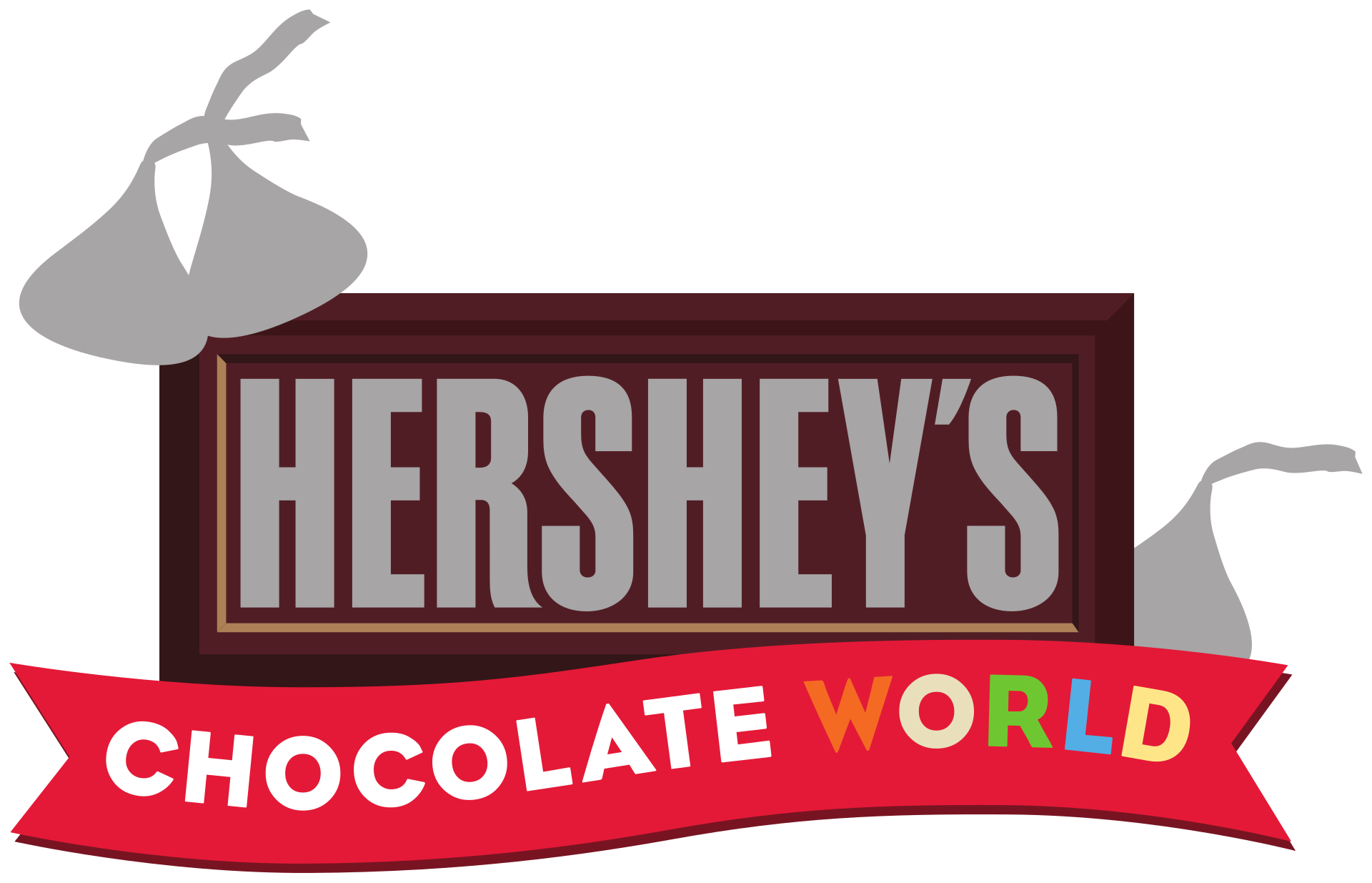
4. **Hershey’s Milk Chocolate Bar (1900)**Stepping into the 20th century, we encounter an American legend that forever stamped its mark on the nation’s sweet tooth: the Hershey’s Milk Chocolate Bar, first unveiled in 1900. While Nestlé debuted its milk chocolate earlier, Milton S. Hershey’s creation was groundbreaking for a different reason: it was the first mass-produced chocolate in the United States, making a once-luxurious treat accessible to millions.
Before Hershey’s, most chocolate bars hailed from Europe. Hershey’s arrival changed the game for America, establishing a domestic chocolate industry. The Milk Chocolate bar quickly became the company’s signature item, and incredibly, it’s still manufactured with the same enduring appeal today, a testament to its timeless recipe and brand power. It’s made using chocolate sourced from local farmers in Pennsylvania, where The Hershey Company is headquartered.
The distinctive process Milton Hershey developed gives the bar its particular taste—a flavor so ingrained in the American palate that many associate it intrinsically with “chocolate” itself. It’s a fascinating cultural phenomenon: while popular and cherished in the U.S., it’s not always widely recognized or universally adored internationally, with many finding its specific profile unique.
Did You Know? The ingenious process that Milton Hershey developed for his iconic Milk Chocolate Bar was notably less sensitive to milk quality than traditional European methods. This innovation was crucial for mass production, allowing for consistent quality even with varying milk supplies and playing a huge role in the bar’s ability to scale and dominate the American market.
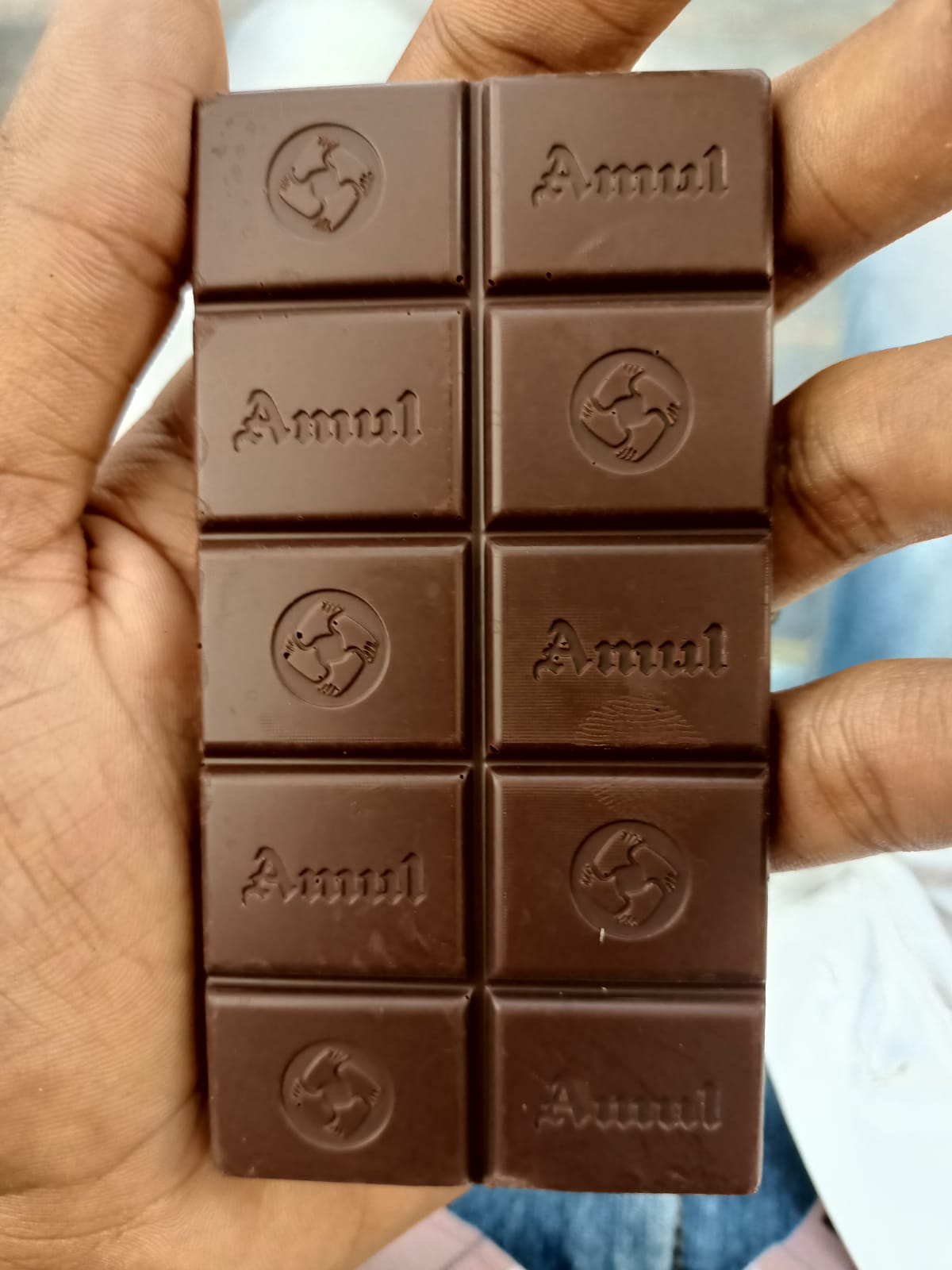
5. **Cadbury Dairy Milk (1905)**Crossing the Atlantic back to England, we discover another confectionery giant: the Cadbury Dairy Milk bar, which made its highly anticipated debut in 1905. Though Cadbury had been producing chocolate bars since 1894, the Dairy Milk bar represented a significant leap forward due to its innovative feature: a much higher proportion of milk compared to the brand’s previous offerings. This new, creamier formulation was an instant, resounding success.
The public adored the richer, smoother taste, and its popularity soared, making it Cadbury’s best-selling product within a mere decade. It wasn’t just a new bar; it was a new standard for milk chocolate. Following this triumph, Cadbury expanded the line, introducing beloved variations like the delightful Fruit and Nut (almonds and raisins) and the crunchy Whole Nut (hazelnuts). In more recent years, Cadbury has even ventured into imaginative territory with flavors like Dairy Milk Ritz and the uniquely Australian Vegemite-flavored bar.
Did You Know? The naming of such an iconic product can be quite a process! Several names were considered for the Cadbury Dairy Milk bar, reflecting various dairy-related concepts, such as Highland Milk, Jersey, and Dairy Maid. However, it was the simple yet elegant suggestion from a customer’s daughter—”Dairy Milk”—that ultimately stuck, proving that sometimes the best ideas come from the most unexpected places.
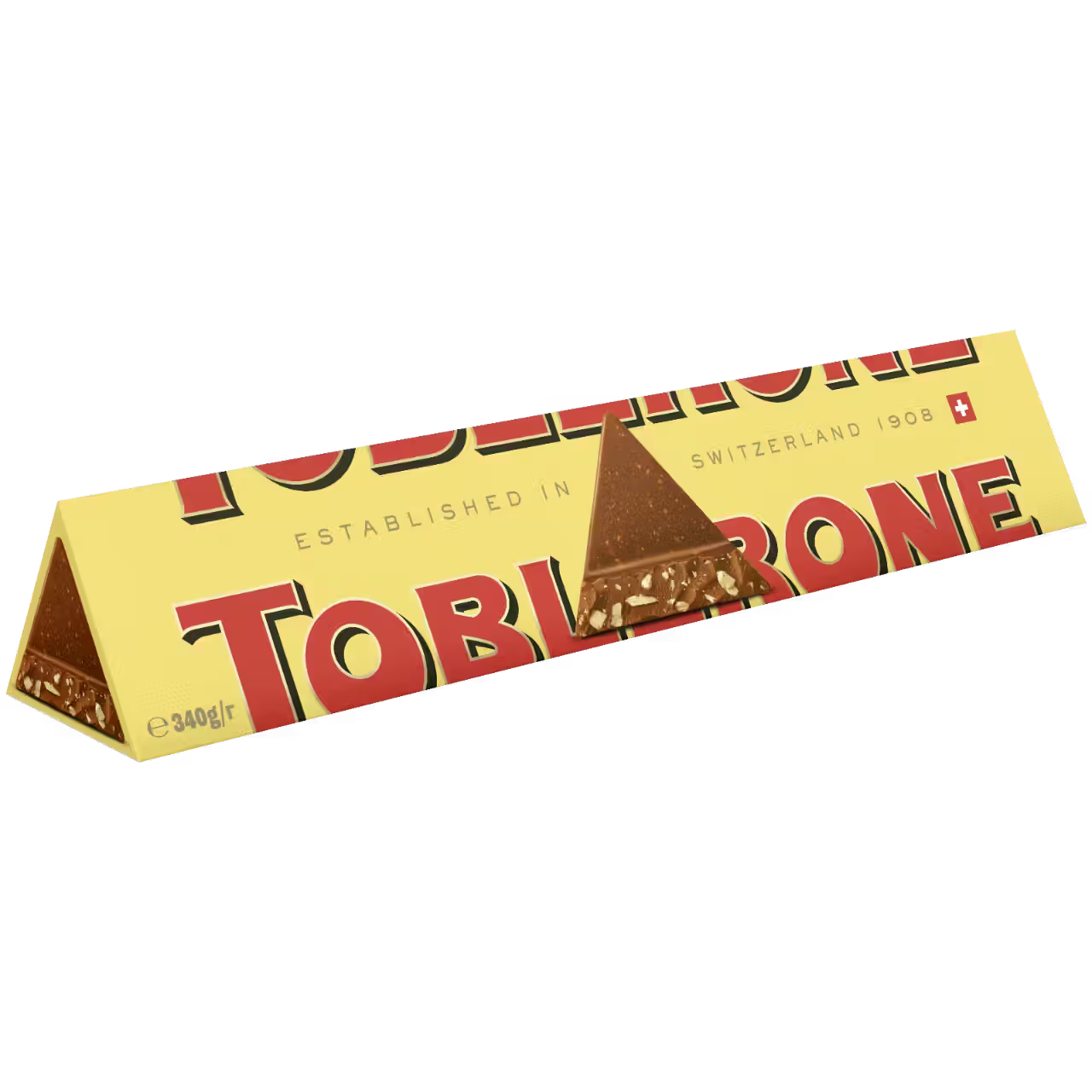
6. **Toblerone (1908)**Our final stop in this first section brings us back to the majestic Swiss Alps, to the year 1908, and the creation of the instantly recognizable Toblerone. This distinctively triangular candy bar was the brainchild of Theodore Tobler, who had inherited his family’s chocolate company in 1900. Partnering with his cousin Emil Baumann, Tobler set out to craft a chocolate bar that was truly unique, both in flavor and form. Their innovation lay in the delicious additions to the milk chocolate base: a delightful blend of nougat, almonds, and honey, creating a rich, complex flavor profile.
It was the iconic triangular prism shape that truly set Toblerone apart, making it one of the most visually distinctive candy bars in the world. The name itself is a clever fusion, combining Tobler’s family name with “Torrone,” a southern European nougat. For years, a popular theory held that Tobler was inspired by the famous Matterhorn mountain for the bar’s shape. However, the truth proved to be a bit more whimsical: Tobler’s children revealed the inspiration came from a pyramid shape dancers at the Folies Bergères created in a show he witnessed.
Did You Know? The Toblerone chocolate bar is so iconic and its shape so memorable that it has even lent its name to something far removed from confectionery! A series of anti-tank emplacements prevalent in Switzerland’s border areas are famously known as the “Toblerone line,” named for their striking resemblance to the triangular segments of the candy. It’s a truly sweet testament to the bar’s enduring and widespread recognition!
As our delicious journey through confectionery history continues, we uncover more venerable treasures that have delighted taste buds for generations. We’ve explored the earliest pioneers; now, let’s delve into six more iconic candy bars that have left an indelible mark on the sweet landscape, each with its own captivating story and enduring charm. Get ready for another bite of fascinating trivia and mouth-watering history!
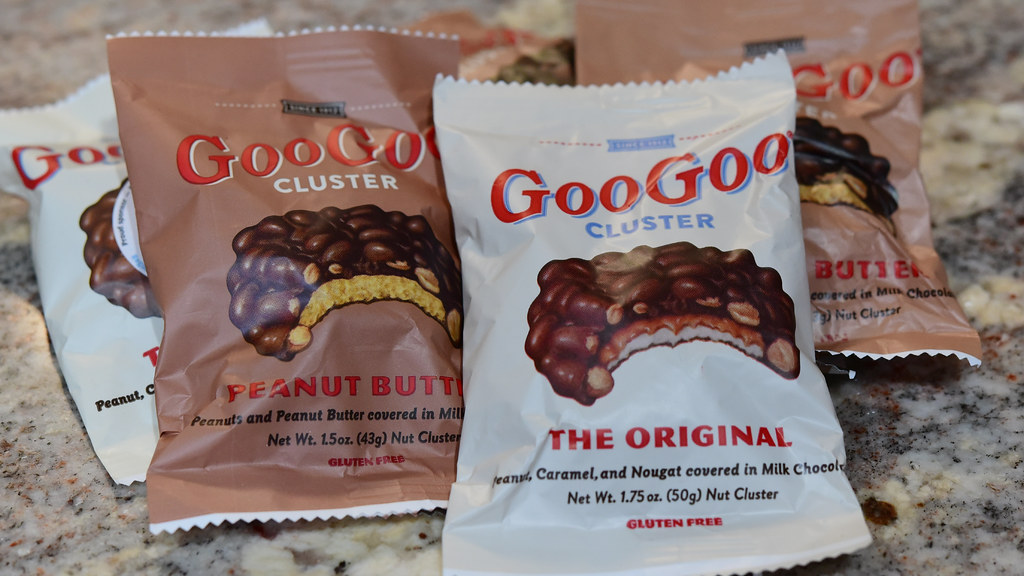
7. **Goo Goo Cluster (1912)**Stepping into the year 1912, we encounter an American original that truly broke the mold: the Goo Goo Cluster. While it might not be the absolute oldest candy bar on our list, it proudly holds the distinction of being the first “combination” candy bar ever created. Think about that for a second! Before the Goo Goo Cluster, candy bars were typically single-ingredient affairs, perhaps just chocolate or a simple caramel. This treat was a game-changer, bringing together a symphony of flavors and textures in one delightful package.
The genius behind this innovative confection was Howell Campbell and the Standard Candy Company in Nashville, Tennessee. They dared to combine multiple ingredients, resulting in a roundish mound of sweet perfection: caramel, marshmallow nougat, fresh roasted peanuts, all enveloped in real milk chocolate. It was a revelation, offering a complex, satisfying experience that quickly became an American South staple. Remarkably, the original recipe has remained virtually unchanged since its inception, a true testament to its timeless appeal.
Over the years, the Goo Goo Cluster expanded its delightful repertoire, introducing additional flavors like pecan and peanut butter to join the classic. But what about that charming, slightly whimsical name? According to the Standard Candy Company’s official history, the inspiration came straight from the nursery. Campbell, discussing his new candy on a streetcar, couldn’t quite land on the perfect name. When asked about his son, Campbell revealed the baby had just uttered his first words: “goo goo.” A quick-thinking teacher suggested it for the candy, and it stuck, giving rise to its memorable slogan: “Goo Goo! It’s so good; people will ask for it from birth.”
Did You Know? A persistent fan theory once suggested the name originated from the candy’s long association with the Grand Ole Opry (“GOO”). However, this charming notion, while plausible given the candy’s Nashville roots, is swiftly debunked by history: the Opry was formed a full 13 years *after* the Goo Goo Cluster made its sweet debut. Sometimes, the simplest explanations are the correct ones!

8. **Fry’s Turkish Delight (1914)**Our next stop takes us back across the Atlantic to England, where J. S. Fry & Sons (a name we’ve encountered before!) introduced a truly exotic confection in 1914: Fry’s Turkish Delight. This wasn’t your average chocolate bar; it was a fascinating fusion of cultures and flavors, designed to transport the palate to distant lands with its unique composition. It stands out even today for its distinctiveness in a world of predominantly caramel and nut-filled bars.
The star of this particular show is, of course, the rose-flavored Turkish delight, a jelly-like confection with roots in the ancient Ottoman Empire. This fragrant, chewy center is then lovingly enrobed in a layer of smooth milk chocolate, creating a delightful contrast of textures and tastes. It’s a bold combination that clearly resonated with the public, securing its place in candy history.
When Cadbury acquired J. S. Fry & Sons in 1919, they wisely decided to retain the “Fry’s Turkish Delight” name. Why change a good thing, especially when it already had such strong name recognition and a loyal following? This decision ensured the legacy of this unique bar continued uninterrupted. In various international markets, particularly Australia and New Zealand, the popularity of Turkish delight products spawned an entire range, including mini Easter eggs, ice cream, and even bite-sized versions for boxed chocolates.
Did You Know? In a move towards healthier formulations, Cadbury began producing the Turkish Delight bar without artificial colors in 2010, though this change didn’t extend to New Zealand. Interestingly, Ireland boasts its own slightly different version, called Dairy Milk Turkish, which features Cadbury Dairy Milk chocolate and a unique Turkish delight center, proving that even classics can have regional variations!
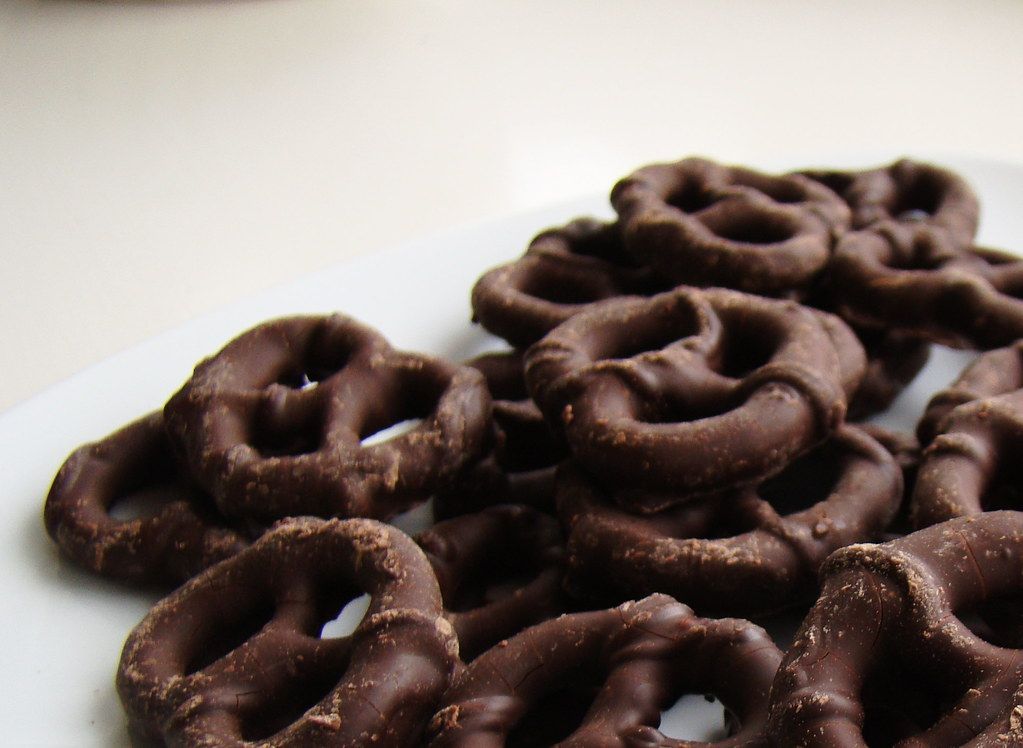
9. **Clark Bar (1917)**Crossing back to American shores, we arrive in 1917, the birth year of a classic that’s been satisfying crunchy cravings for over a century: the Clark Bar. This venerable treat holds a special place in the hearts of many, particularly in its home region. It’s often compared to the more universally known Butterfinger, and for good reason—it shares that irresistible combination of a crisp, flaky peanut butter center with a rich chocolate coating.
The mastermind behind this enduring confection was David L. Clark, an Irish-born candy salesman with a vision. He established the D. L. Clark Company to manufacture his own creations, and the Clark Bar quickly became a flagship product. Beyond this iconic bar, the company also gave us the Zagnut bar, another beloved retro American favorite, showcasing Clark’s knack for innovative and tasty treats. The D. L. Clark Company remained a family-owned enterprise until 1955, a testament to its strong independent roots.
Like many long-standing brands, the Clark Bar experienced a journey through various corporate ownerships after its initial family tenure. It eventually landed with NECCO in 1999, which continued its production until the company’s unfortunate bankruptcy in 2018. But fear not, fans of the crunch! The story didn’t end there. The rights to the Clark Bar were acquired by the Boyer Candy Company, famous for their regional Mallo Cup, and they proudly resumed production in 2020.
Did You Know? The Clark Bar’s revival initially saw it sold exclusively in Western Pennsylvania, a nod to its loyal regional following, with plans for a broader nationwide release. Creating that signature crunchy interior is no simple feat; the process for making a single Clark Bar is surprisingly intense, taking approximately 90 minutes to achieve that perfect, unforgettable texture!
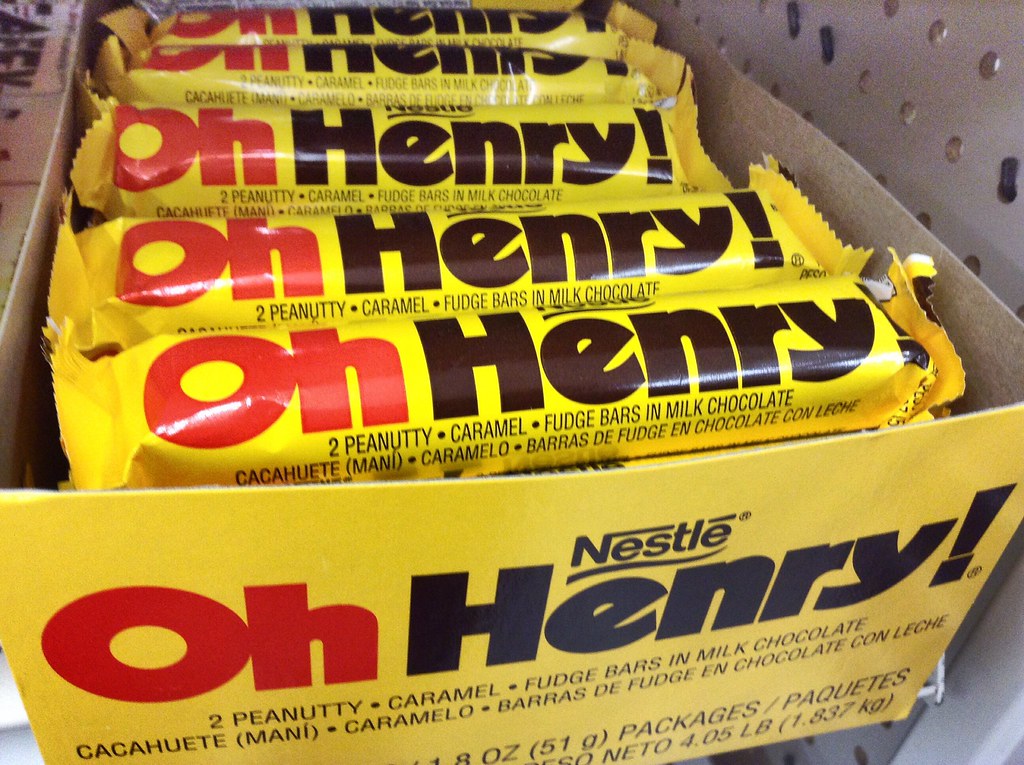
10. **Oh Henry! (1920)**Our sweet journey brings us to 1920, a year that saw the introduction of a truly beloved American candy bar shrouded in delightful mystery: the Oh Henry! This tantalizing confection, with its satisfying blend of peanuts, caramel, and fudge all enrobed in a generous layer of milk chocolate, quickly became a staple. Its history, however, is a fun mix of folklore and conflicting accounts, making it all the more intriguing.
The Williamson Candy Company in Chicago, Illinois, is credited with creating the Oh Henry! bar. But the origin of its catchy name is where the stories diverge. One popular legend, steeped in factory lore, suggests the bar was named after a charming young man named Henry. He was supposedly a frequent visitor to the Williamson factory, often flirting with the female workers. These women, it’s said, would frequently call out to him with exclamations like, “Oh Henry, will you do this?” or “Oh Henry, will you do that?” When Mr. Williamson needed a name for his new candy bar, the memorable phrase supposedly sprang to mind.
A more pragmatic, though perhaps less romantic, theory posits that the bar was actually named after Tom Henry, the candy’s original inventor, who simply sold his recipe to the Williamson Company in 1920. Regardless of its true naming origin, the Oh Henry! bar enjoyed immense popularity. For decades, it was manufactured by Nestlé in the U.S. However, its American production was discontinued in 2019 by Ferrara Candy Company, which had acquired the rights from Nestlé.
Did You Know? While the American Oh Henry! is no longer with us, the candy bar admirably lives on in Canada, where it’s manufactured by the Hershey Company. The Canadian version, however, boasts a distinct difference from its former American counterpart. It features a single bar with the fudge nestled in the center, surrounded by a thin layer of caramel, with nuts encircling that layer, all before being enrobed in its final chocolate coating. It’s a sweet example of how national palates can influence a classic!
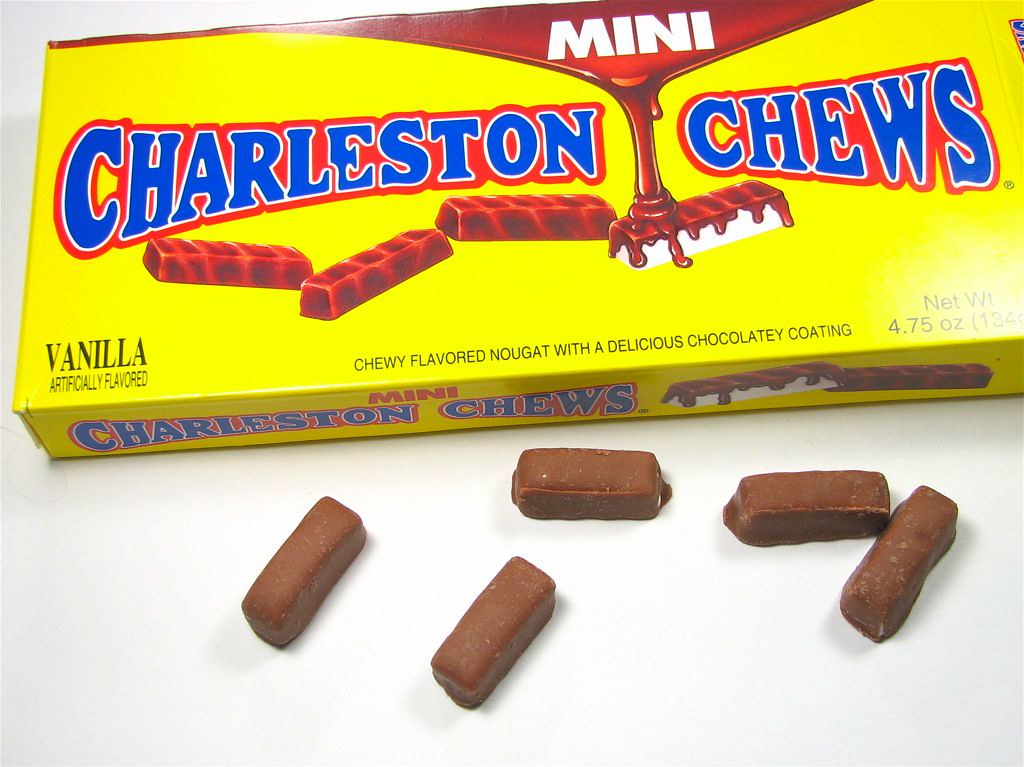
11. **The Charleston Chew (1922)**Just a couple of years after the “Oh Henry!” made its debut, another iconic American chocolate bar danced onto the scene in 1922: The Charleston Chew. This treat instantly evokes a sense of nostalgia for many, transporting them back to an era of flapper dresses and lively jazz. It was, in fact, directly named after the Charleston dance craze that swept the 1920s, a period celebrated for its spirit of freedom, extravagance, liberty, and pure joy.
Unlike some of the more complex flavor profiles we see today, The Charleston Chew offers a satisfyingly sweet experience designed to truly satisfy a candy craving. The original vanilla-flavored nougat, generously coated in milk chocolate, quickly became a sensation. It wasn’t long before the brand expanded its offerings, and by the 1970s, candy lovers could enjoy a delightful trio: classic vanilla, sweet strawberry, and rich chocolate flavors. The fact that these variations are still readily available on store shelves today is a testament to their enduring appeal.
There’s a fantastic little secret that many Charleston Chew enthusiasts swear by to elevate their chocolate experience even further. While delicious at room temperature, freezing the bar transforms it into a whole new crunchy delight. Many devotees enjoy breaking off tiny, crispy bits from a frozen Charleston Chew, creating an entirely different texture and sensation. It’s a ritual that any true chew lover must try, especially on a steamy summer day when nothing quite beats the cool, satisfying snap of a frozen Charleston Chew.
Did You Know? The Charleston Chew’s distinctive chewy nougat, combined with its rich chocolate coating, makes it a uniquely satisfying treat, whether enjoyed soft and pliable or frozen and shattered. Its longevity showcases how simple, well-executed flavors can captivate generations, evolving with the times while staying true to its original joyful spirit.

12. **Reese’s Peanut Butter Cups (1928)**Our final, but certainly not least, stop on this historical candy bar tour brings us to an undeniable American icon, a treat so popular it generates billions in sales annually: Reese’s Peanut Butter Cups, first introduced in 1928. This brilliant confection perfectly marries two of America’s most beloved flavors—peanut butter and chocolate—in a way that has become legendary, creating a craveable combination that’s truly a class of its own.
The story of Reese’s is as inspiring as its flavor. H. B. Reese, a man with 16 children, toiled in various jobs to support his large family. In 1917, he began working on a dairy farm owned by none other than Milton Hershey himself. Reese spent many years there, eventually transitioning to work in Hershey’s chocolate factory. Deeply inspired by Milton Hershey’s entrepreneurial spirit and success, Reese decided to strike out on his own, beginning to make his own chocolates.
In 1928, Reese debuted his now-famous peanut butter-filled chocolates, which he aptly named “peanut butter cups.” The concept was an immediate hit. The unique, perfectly balanced ratio of creamy peanut butter to smooth milk chocolate captured the American palate, and its popularity soared. Decades later, in the early 1960s, The Hershey Company recognized the immense value and acquired Reese’s company, along with the rights to his beloved peanut butter cups. It was a sweet homecoming for a product born out of Hershey’s own inspiration.
Did You Know? Reese’s Peanut Butter Cups are not just a popular candy; they are a confectionery powerhouse. They are so incredibly well-loved that this single candy generates more than $2 billion in annual sales for The Hershey Company, solidifying its position as one of the most successful and enduring sweet treats in American history, truly capping off our list with a bang!
As we conclude our delightful expedition through the annals of candy bar history, it’s truly remarkable to see how these seemingly simple confections have not only stood the test of time but have also become woven into the fabric of our culture. From revolutionary production methods to accidental discoveries and ingenious flavor combinations, each bar tells a unique story of innovation and passion. These sweet legacies remind us that while tastes and trends may evolve, the universal joy of unwrapping a cherished candy bar remains eternally timeless. So, next time you reach for one of these venerable treats, take a moment to savor not just the flavor, but the rich history behind every delicious bite. Perhaps you’ll even discover a new appreciation for these enduring symbols of sweet ingenuity!


